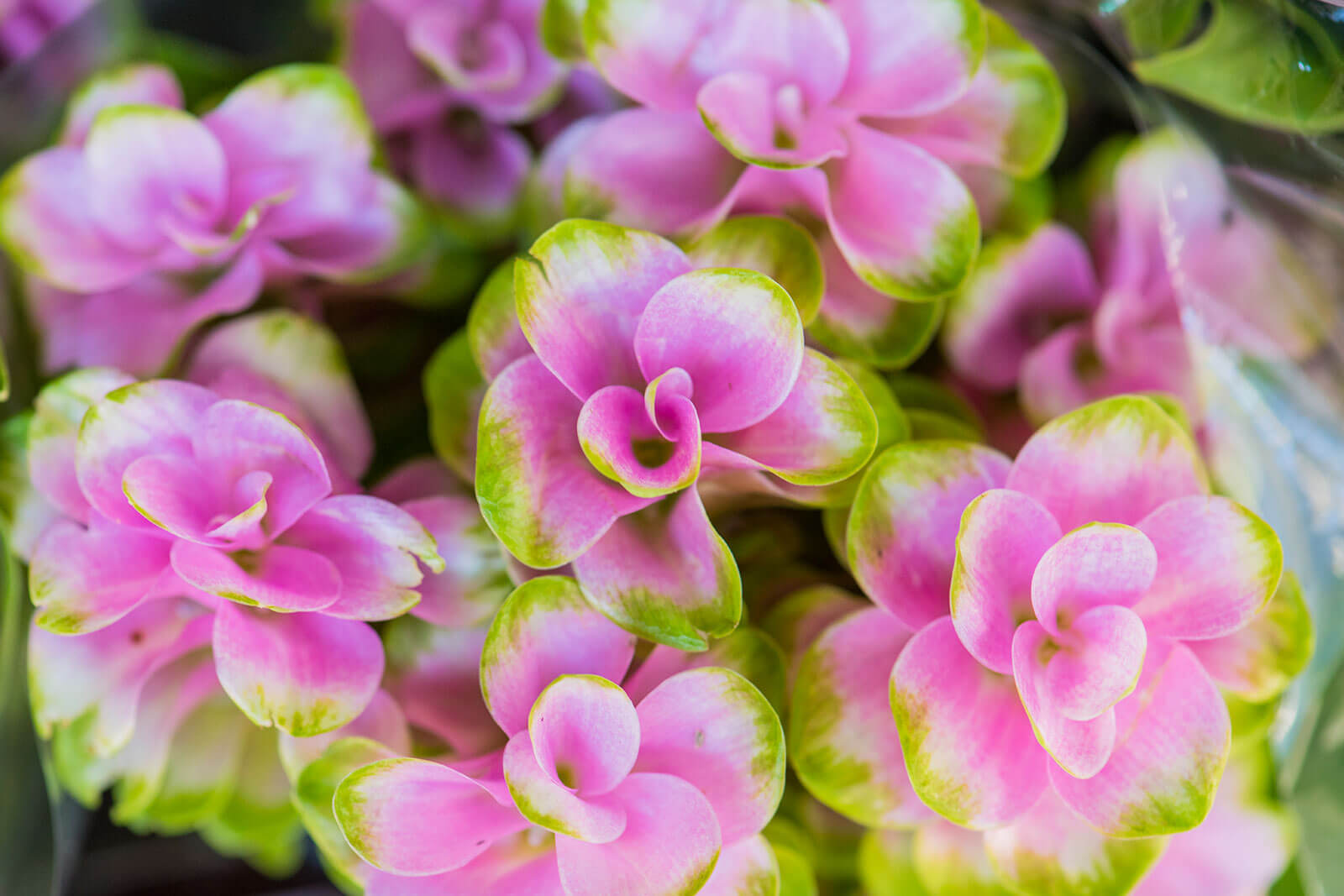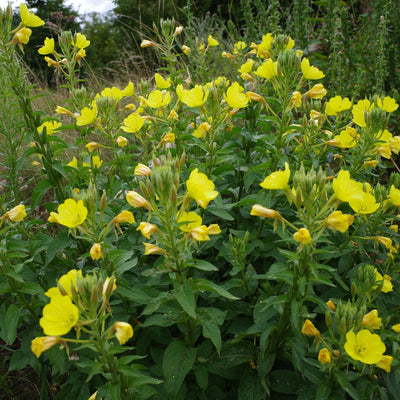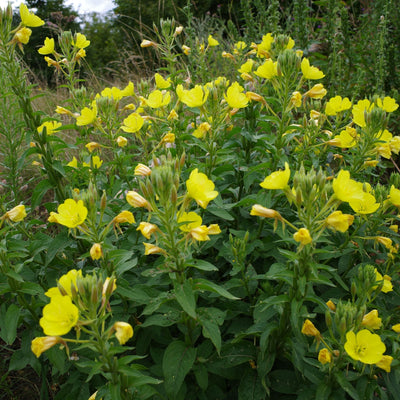As the spring sun begins to warm the earth, planting pink primrose breathes life back into outdoor spaces. Among the array of colorful blooms that grace the garden beds, these pink flowers stand out as a delightful addition, offering vibrant hues and delicate petals to enliven any landscape.
Planting pink primrose not only adds visual appeal but also brings a sense of rejuvenation and renewal to the spring garden. With its charming blossoms and relatively low maintenance requirements, pink primrose is a favorite choice for both seasoned gardeners and newcomers alike.
Pink Primrose Preparation
Taking the time to prepare both the location and the soil is crucial for ensuring the success and vibrancy of these delightful flowers.
Here's a guide to help you navigate through the process of selecting the optimal location and preparing the soil to give your pink primrose the best start possible.
Choosing the Right Location
Before delving into planting pink primrose, it's crucial to select an optimal location for your pink primrose. These plants thrive in partial to full sunlight, so aim for a spot in your garden that receives at least 4 to 6 hours of sunlight per day.
Additionally, ensure that the soil is well-drained to prevent waterlogging, as pink primrose prefers slightly moist but not waterlogged conditions. Loamy soil enriched with organic matter provides an ideal growing medium for these beauties.
Preparing the Soil
Once you've identified the perfect spot, it's time to prepare the soil for planting. Begin by loosening the soil to a depth of about 6 to 8 inches using a garden fork or tiller. Remove any weeds, rocks, or debris that may impede the growth of your pink primrose.
Incorporating organic matter such as compost or well-rotted manure into the soil can improve its texture and fertility, providing essential nutrients for your plants to thrive.
Planting Pink Primrose: Step-by-Step Process
Now comes the exciting part—planting your pink primrose! Here's a step-by-step growing guide on how to plant pink primrose (oenothera speciosa).
Step 1: Digging the Hole
Begin by preparing the planting hole for your pink primrose. Using a shovel or garden trowel, dig a hole that is slightly larger than the root ball of your plant. The depth of the hole should be such that the top of the root ball sits level with the surrounding soil once the plant is placed inside.
Step 2: Positioning the Plant
Carefully remove the pink primrose from its container, taking care not to disturb the roots excessively. Gently place the plant into the prepared hole, ensuring that it is centered and upright.
Step 3: Backfilling With Soil
Once the plant is in position, backfill the hole with soil, taking care to fill in around the roots evenly. Use your hands to gently press the soil down around the base of the plant, ensuring that there are no air pockets left behind. Tamp the soil lightly to secure the plant in place.
Step 4: Watering Thoroughly
After planting, it's essential to give your pink primrose a thorough watering to help settle the soil and provide much-needed moisture to the roots. Use a watering can or garden hose to soak the soil around the plant, ensuring that the water reaches the root zone. Water until the soil is evenly moist but not waterlogged.
Step 5: Mulching (Optional)
If desired, you can apply a layer of organic mulch around the base of the plant to help retain moisture, suppress weeds, and regulate soil temperature. However, take care not to mulch too close to the stem of the plant, as this can lead to rotting.
Step 6: Monitoring and Care
Finally, monitor your newly planted pink primrose regularly in the days and weeks following planting. Keep the soil consistently moist but not soggy, especially during periods of hot or dry weather. As the plant establishes itself, it will begin to put out new growth and, eventually, bloom.
In-Depth Guide on How To Care for Pink Primrose
To ensure the health and vitality of your pink primrose throughout the growing season, proper care is essential. Here are some tips to help your pink flowers thrive:
Watering
Pink primroses prefer soil that is slightly moist but not waterlogged. Overwatering can lead to root rot and other fungal diseases, compromising the health of the plant.
To prevent this, it's essential to allow the soil to dry slightly between waterings. Check the soil moisture by inserting your finger into the soil up to the second knuckle; if it feels dry, it's time to water.
When watering, aim to water at the base of the plant rather than overhead, as wet foliage can promote fungal infections.
A deep watering once or twice a week, depending on weather conditions, is generally sufficient to keep pink primrose thriving.
Fertilizing
Pink primrosees benefit from regular feeding to support healthy growth and prolific flowering. Use a balanced, water-soluble fertilizer formulated for flowering plants.
Apply the fertilizer every 4 to 6 weeks during the growing season, following the manufacturer's instructions for proper dilution rates and application timing.
Avoid over-fertilizing, as this can lead to excessive foliage growth at the expense of flower production.
Mulching
Mulching around pink primrose provides several benefits, including moisture retention, weed suppression, and soil temperature regulation.
Apply a 2- to 3-inch layer of organic mulch, such as shredded bark or compost, around the base of the plant, being careful to keep the mulch several inches away from the plant's stem to prevent rotting.
Mulch also helps protect the shallow roots of pink primroses from temperature fluctuations and drying out, particularly during hot summer months.
Deadheading
Deadheading, or removing spent flowers, is essential for promoting continuous blooming and maintaining the overall appearance of pink primroses.
As flowers fade and petals wilt, use clean, sharp pruners to snip off the spent blooms just above a set of healthy leaves or buds.
Deadheading redirects the plant's energy into producing new flowers rather than setting seeds, ensuring a prolonged display of color throughout the growing season.
Winter Protection
In colder climates, pink primroses may benefit from winter protection to shield their roots from freezing temperatures and frost damage.
Before the onset of winter, apply a layer of mulch or straw around the base of the plant to insulate the soil and roots. This protective layer helps maintain a more stable soil temperature and prevents frost heaving, which can expose roots to harsh winter conditions.
Additionally, consider covering pink primrose with a frost cloth or temporary shelter during extreme cold snaps to provide added protection against freezing temperatures.
How To Attract Pollinators for Your Pink Evening Primrose
Attracting pollinators to your garden not only enhances the beauty of your outdoor space but also plays a vital role in supporting the ecosystem and promoting plant health. Pink primrose, with its vibrant blossoms and sweet nectar, is an excellent choice for attracting pollinators such as bees, butterflies, and hummingbirds.
Here's how you can maximize the appeal of pink primrose to these beneficial creatures.
Plant in Clusters
Planting pink primrose in clusters or groups rather than scattering them throughout your garden creates a more visually striking display of flowers. Clustering the plants together not only amplifies their impact but also makes it easier for pollinators to locate them.
When pink primroses are grouped, their collective blooms create a concentrated source of nectar and pollen, attracting pollinators from a wider area. This clustering effect can enhance the overall attractiveness of your garden to beneficial insects, increasing pollination rates and promoting biodiversity.
Select a Sunny Location
Pink primrose thrives in environments with ample sunlight. When selecting a location for planting, prioritize spots in your garden that receive partial to full sunlight. Aim for at least 4 to 6 hours of direct sunlight per day to ensure optimal flower production and nectar production.
Adequate sunlight not only promotes vigorous growth and abundant blooms but also enhances the fragrance and color intensity of the flowers.
Placing pink primrose in a sunny location provides them with the energy they need to thrive and attract pollinators throughout the growing season.
Provide Shelter
In addition to food sources, pollinators also require shelter and nesting sites to thrive. Planting pink primrose near shrubs, trees, or other flowering plants provides shelter and refuge for pollinators when they are not actively foraging.
These nearby structures offer protection from predators, harsh weather conditions, and disturbances, creating a more hospitable environment for pollinators to inhabit.
Incorporating sheltered areas into your garden landscape encourages the establishment of stable pollinator populations and supports the overall health of your ecosystem.
Avoid Pesticides
Pesticides can have detrimental effects on pollinators, disrupting their behavior, reproduction, and survival.
To protect pollinator populations and maintain a healthy garden ecosystem, minimize or eliminate the use of pesticides in your garden. Instead, opt for natural pest control methods such as companion planting, biological controls, and cultural practices.
This creates a safer environment for pollinators to forage and thrive, ensuring their continued contribution to pollination and biodiversity.
Plant Companion Flowers
Pairing pink primrose with other nectar-rich flowers enhances the overall attractiveness of your garden to pollinators.
Companion planting with species such as lavender, salvia, bee balm, and butterfly bush creates a diverse and vibrant habitat that appeals to a wide range of beneficial insects. These companion flowers provide additional food sources and nesting sites for pollinators, supporting their populations throughout the growing season.
With a variety of nectar-rich plants in your garden landscape, you can create an inviting haven for pollinators and enjoy the beauty of their visits as they flit from flower to flower.
Common Issues With Pink Primroses and How To Fix Them
Pink primroses are generally low-maintenance plants, but like any other garden species, they may encounter certain issues that can affect their health and appearance. Here are some common problems you may encounter with pink primroses and how to troubleshoot them:
Yellowing Leaves
Yellowing leaves on pink primrose can be a sign of overwatering, under-watering, or nutrient deficiencies. Ensure that the soil is well-drained and that you are watering your primroses appropriately—keeping the soil evenly moist but not waterlogged.
If the yellowing persists, consider feeding your plants with a balanced fertilizer to address any nutrient deficiencies.
Fungal Diseases
Pink primroses are susceptible to fungal diseases such as powdery mildew and root rot, especially in humid conditions or if they are overcrowded.
To prevent fungal diseases, ensure proper air circulation around your plants by spacing them adequately and avoiding overhead watering. Remove and dispose of any affected leaves or plants promptly to prevent the spread of the disease.
Pest Infestations
Common pests that may affect pink primrose include aphids, spider mites, and slugs. Regularly inspect your plants for signs of pest infestations, such as distorted leaves, sticky residue, or chewed foliage.
Use insecticidal soap or neem oil to treat minor infestations, or consider using biological control methods such as introducing beneficial insects like ladybugs or lacewings.
Wilting or Drooping
Wilting or drooping foliage on pink primroses can be caused by under-watering, overwatering, or heat stress.
Check the soil moisture regularly and adjust your watering schedule as needed, ensuring that the soil remains consistently moist but not soggy.
Provide shade or shelter during hot afternoon sun to prevent heat stress.
Lack of Blooms
If your pink primrose is not blooming as expected, it may be due to insufficient sunlight, improper pruning, or overcrowding.
Ensure that your plants are receiving adequate sunlight—ideally, 4 to 6 hours of direct sunlight per day.
Deadhead spent flowers regularly to encourage continuous blooming, and thin out overcrowded plants to promote better airflow and light penetration.
Winter Damage
In colder climates, pink primrose may suffer from winter damage due to freezing temperatures or frost. Provide winter protection by applying a layer of mulch or straw around the base of the plants to insulate the roots.
Alternatively, consider bringing potted pink primrose indoors or covering them with frost cloth during extreme cold snaps.
Starting Planting Pink Primroses Today
With proper care and attention, your pink evening primrose will reward you with a profusion of charming pink blossoms, brightening up your garden beds and containers throughout the spring and early summer months.
Whether planted en masse for a stunning display or nestled amongst other spring blooms, pink primrose adds a touch of elegance and whimsy to any garden setting.
So roll up your sleeves, embrace the joys of spring gardening, and let the beauty of pink primrose transform your outdoor oasis into a vibrant paradise. Start planting pink primrose today!



